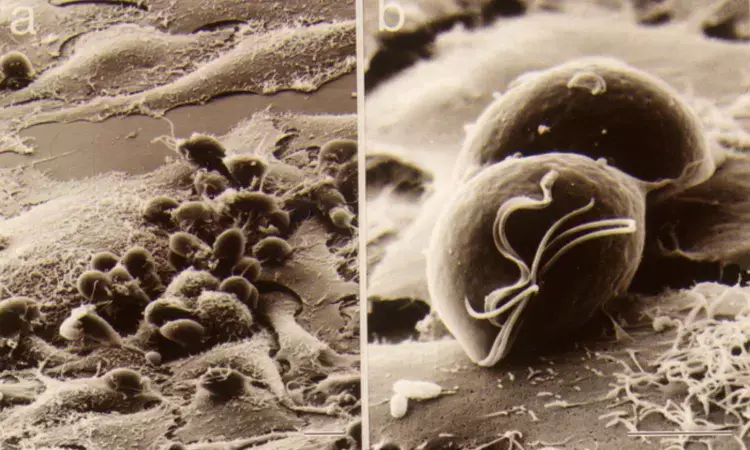- Home
- Medical news & Guidelines
- Anesthesiology
- Cardiology and CTVS
- Critical Care
- Dentistry
- Dermatology
- Diabetes and Endocrinology
- ENT
- Gastroenterology
- Medicine
- Nephrology
- Neurology
- Obstretics-Gynaecology
- Oncology
- Ophthalmology
- Orthopaedics
- Pediatrics-Neonatology
- Psychiatry
- Pulmonology
- Radiology
- Surgery
- Urology
- Laboratory Medicine
- Diet
- Nursing
- Paramedical
- Physiotherapy
- Health news
- Fact Check
- Bone Health Fact Check
- Brain Health Fact Check
- Cancer Related Fact Check
- Child Care Fact Check
- Dental and oral health fact check
- Diabetes and metabolic health fact check
- Diet and Nutrition Fact Check
- Eye and ENT Care Fact Check
- Fitness fact check
- Gut health fact check
- Heart health fact check
- Kidney health fact check
- Medical education fact check
- Men's health fact check
- Respiratory fact check
- Skin and hair care fact check
- Vaccine and Immunization fact check
- Women's health fact check
- AYUSH
- State News
- Andaman and Nicobar Islands
- Andhra Pradesh
- Arunachal Pradesh
- Assam
- Bihar
- Chandigarh
- Chattisgarh
- Dadra and Nagar Haveli
- Daman and Diu
- Delhi
- Goa
- Gujarat
- Haryana
- Himachal Pradesh
- Jammu & Kashmir
- Jharkhand
- Karnataka
- Kerala
- Ladakh
- Lakshadweep
- Madhya Pradesh
- Maharashtra
- Manipur
- Meghalaya
- Mizoram
- Nagaland
- Odisha
- Puducherry
- Punjab
- Rajasthan
- Sikkim
- Tamil Nadu
- Telangana
- Tripura
- Uttar Pradesh
- Uttrakhand
- West Bengal
- Medical Education
- Industry
Trichomonas vaginalis infection not associated with preterm labor, BMC study

A new study published in the recent issue of BMC Research Notes journal showed no independent correlation between Trichomonas vaginalis and preterm labor (PTL).
The spontaneous commencement of uterine contractions followed by progressive cervical alterations and descent of the presenting parts after the fetal viability threshold, which is typically regarded as occurring between 22 and 24 weeks of gestation, but before 37 full weeks of gestation is known as preterm labor (PTL).
40%-60% of all perinatal fatalities and 50% of children under five who suffer from long-term neurological damage are caused by preterm delivery. Nearly one million of the more than 13 million prematurely born babies in 2020 pass away as a result of preterm birth problems, with more than 60% of these deaths taking place in South Asia and sub-Saharan Africa.
Trichomonas vaginalis is the causative agent of trichomoniasis, the most common non-viral STD, affecting an estimated 143 million individuals globally. Preterm delivery, low birth weight, perinatal morbidity, and prelabour rupture of membranes (PROM) are among the negative outcomes linked to T. vaginalis infections during pregnancy, according to the results of observational studies and meta-analyses.
Data on the effects of Trichomonas vaginalis infection on PTL, particularly in sub-Saharan African women, are still few, nevertheless. Using a molecular-based quick antigen detection approach to identify T. vaginalis infection, this study ascertained the correlation between PTL and T. vaginalis infection in pregnant women in Lagos, Southwest, Nigeria.
Between April and December 2019, parturients treated in the labor wards of three hospitals in Lagos, Southwest Nigeria, participated in this multicenter analytical cross-sectional study. Between April and December 2019, 105 pregnant women with PTL and an equivalent number of women who experienced term labor had high vaginal swab samples taken.
The antigen of T. vaginalis T. vaginalis was found in the vaginal samples using a rapid assay. To account for all possible factors in the relationship between PTL and T. vaginalis infection, multivariable binary logistic regression analyses were employed. A p-value of less than 0.05 was considered statistically significant.
The individuals with PTL had a considerably greater frequency of T. vaginalis infection than those with term labor. There was no correlation between T. vaginalis infection and PTL after controlling for age, parity, economic and educational level, atypical vaginal discharge, and the incidence of prelabor rupture of membranes.
Overall, to further investigate the effects of coinfections or interactions among other local or systemic pathogens and T. vaginalis infection on the occurrence of PTL, this study recommend future adequately powered longitudinal studies.
Source:
Sunmonu, O. H., Okunade, K. S., & Adegbola, O. (2025). Association between Trichomonas vaginalis infection and spontaneous preterm labour in Lagos, Nigeria: an analytical cross-sectional study. BMC Research Notes, 18(1), 142. https://doi.org/10.1186/s13104-025-07196-1
Neuroscience Masters graduate
Jacinthlyn Sylvia, a Neuroscience Master's graduate from Chennai has worked extensively in deciphering the neurobiology of cognition and motor control in aging. She also has spread-out exposure to Neurosurgery from her Bachelor’s. She is currently involved in active Neuro-Oncology research. She is an upcoming neuroscientist with a fiery passion for writing. Her news cover at Medical Dialogues feature recent discoveries and updates from the healthcare and biomedical research fields. She can be reached at editorial@medicaldialogues.in
Dr Kamal Kant Kohli-MBBS, DTCD- a chest specialist with more than 30 years of practice and a flair for writing clinical articles, Dr Kamal Kant Kohli joined Medical Dialogues as a Chief Editor of Medical News. Besides writing articles, as an editor, he proofreads and verifies all the medical content published on Medical Dialogues including those coming from journals, studies,medical conferences,guidelines etc. Email: drkohli@medicaldialogues.in. Contact no. 011-43720751


